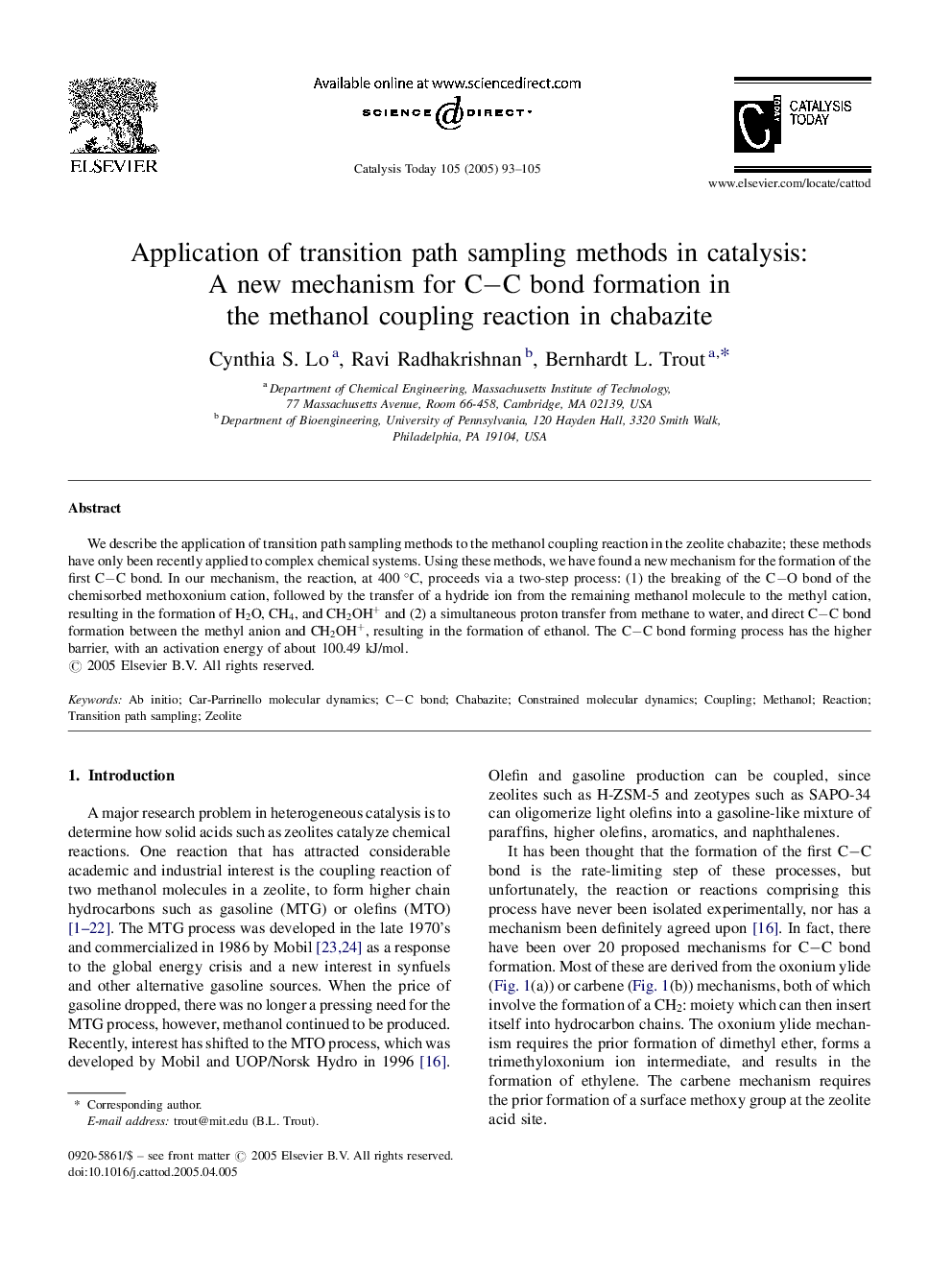| Article ID | Journal | Published Year | Pages | File Type |
|---|---|---|---|---|
| 10243804 | Catalysis Today | 2005 | 13 Pages |
Abstract
We describe the application of transition path sampling methods to the methanol coupling reaction in the zeolite chabazite; these methods have only been recently applied to complex chemical systems. Using these methods, we have found a new mechanism for the formation of the first CC bond. In our mechanism, the reaction, at 400â°C, proceeds via a two-step process: (1) the breaking of the CO bond of the chemisorbed methoxonium cation, followed by the transfer of a hydride ion from the remaining methanol molecule to the methyl cation, resulting in the formation of H2O, CH4, and CH2OH+ and (2) a simultaneous proton transfer from methane to water, and direct CC bond formation between the methyl anion and CH2OH+, resulting in the formation of ethanol. The CC bond forming process has the higher barrier, with an activation energy of about 100.49âkJ/mol.
Keywords
Related Topics
Physical Sciences and Engineering
Chemical Engineering
Catalysis
Authors
Cynthia S. Lo, Ravi Radhakrishnan, Bernhardt L. Trout,
